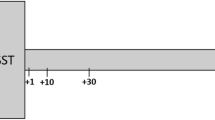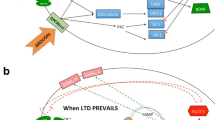Abstract.
Post-traumatic stress disorder (PTSD) has been associated with decreased neopterin levels. In the present study, we evaluated whether this low neopterin levels would normalize following pharmacotherapy with sertraline in PTSD. Fourteen patients with PTSD and 14 controls were enrolled in the study. A clinical evaluation and measurements of neopterin levels before and after sertraline treatment were performed. In addition, all patients were assessed with the Clinician Administered PTSD Scale (CAPS). The mean neopterin levels were significantly lower in the patient group than control group at baseline and were negatively correlated with the duration of illness, or severity of illness. Sertraline treatment decreased the symptoms of PTSD; however this was not accompanied by a significant increase in neopterin production. In conclusion, our results reveal that the failure for neopterin to normalize through symptom alleviation suggests that either neopterin may be a trait marker of the illness, or that more sustained treatment is necessary to elevate the neopterin production.
Similar content being viewed by others
Author information
Authors and Affiliations
Additional information
Received: 30 September 2002 / Accepted: 12 December 2002
Correspondence to Dr. Murad Atmaca
Rights and permissions
About this article
Cite this article
Atmaca, M., Tezcan, E., Kuloglu, M. et al. Neopterin production in posttraumatic stress disorder before and after pharmacotherapy. European Archives of Psychiatry and Clinical Neurosciences 253, 34–36 (2003). https://doi.org/10.1007/s00406-003-0402-0
Issue Date:
DOI: https://doi.org/10.1007/s00406-003-0402-0




